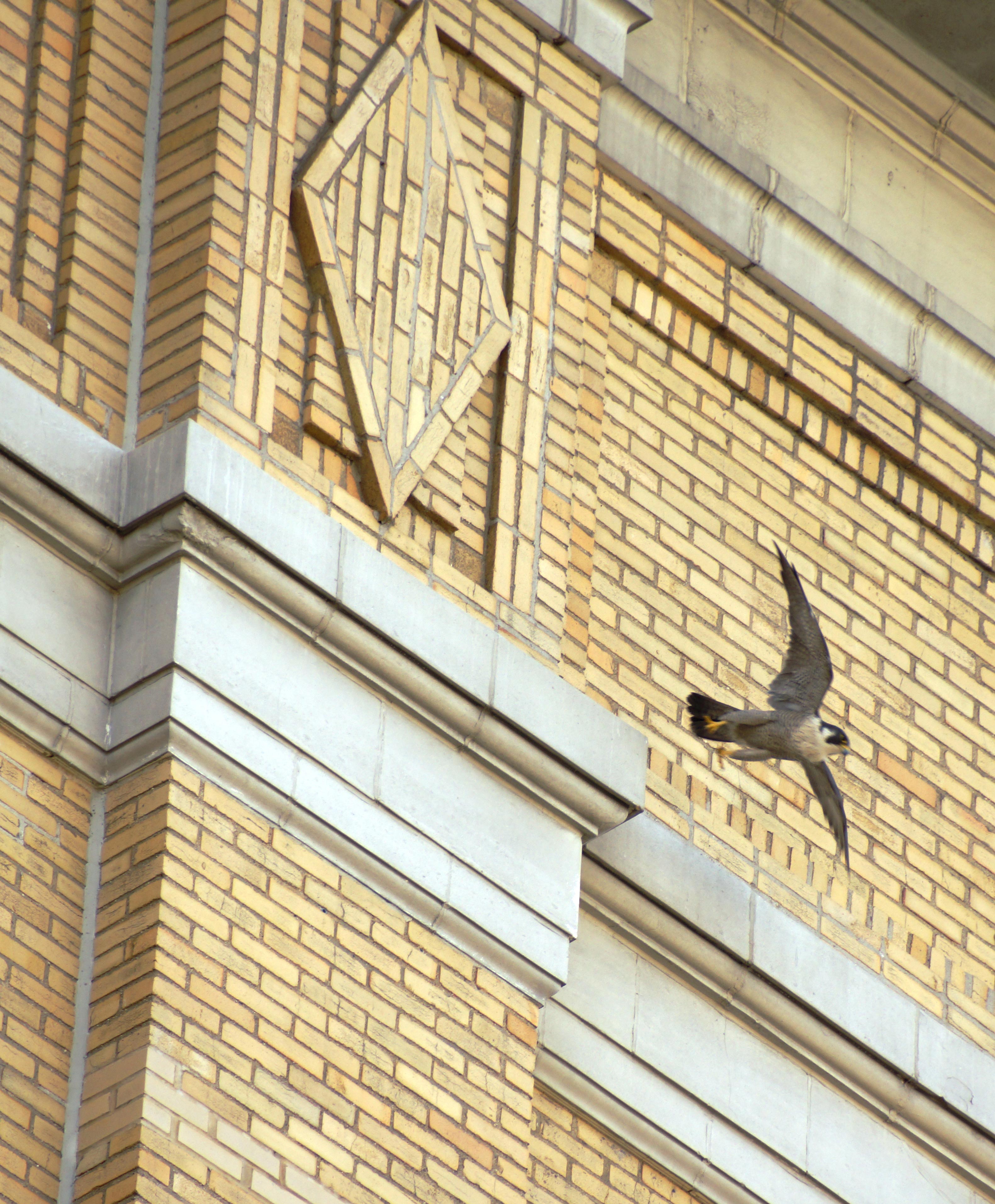

It takes on average between 29 and 33 days for a single egg to hatch. Incubation starts with the laying of the penultimate or final egg: in other words the 3rd or 4th egg of a 4 egg clutch. If the first clutch is lost the falcon will lay another if there is enough time left in the breeding season.

Peregrines lay a clutch that consists of 2 to 4 eggs. Urban Peregrines do this in roof shingle, pigeon remains or other available debris. Peregrines do not build nests but make a shallow bowl which they scratch out with their feet. Urban peregrines mainly prey on street pigeons but have been recorded taking a variety of species. When the prey is a short distance away the Peregrine will leave its perch and rapidly close on its victim by approaching from behind and slightly below. Another hunting method is to perch high up and wait for a bird to pass below it. A Peregrine will fly above its intended victim then, folding back its wings, it stoops (dives) on it's prey, either grabbing it in flight or striking it dead on impact. They prey on birds that they catch in flight. In level flight it flies between 40 and 50 m.p.h., but in a dive or stoop it has been recorded at just over 200 m.p.h. The Peregrine is one of the world’s fastest birds. However, if one of the pair dies the surviving bird will accept a new mate. The male is known as a Tiercel and the female simply as a Falcon. The male is the size of a crow and is two-thirds the size of the female. The Peregrine is the largest falcon in the U.K. Left to right: female and male Peregrines © Adrian Dancy


 0 kommentar(er)
0 kommentar(er)
